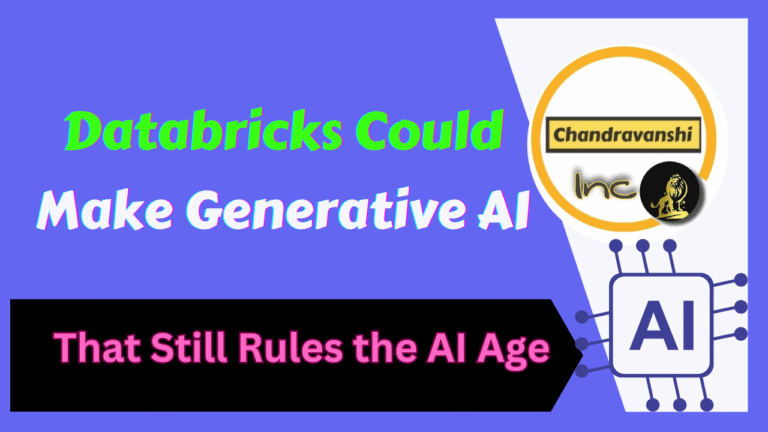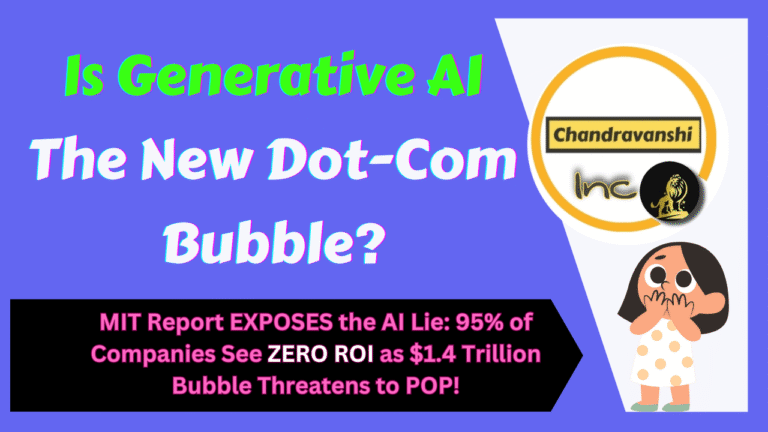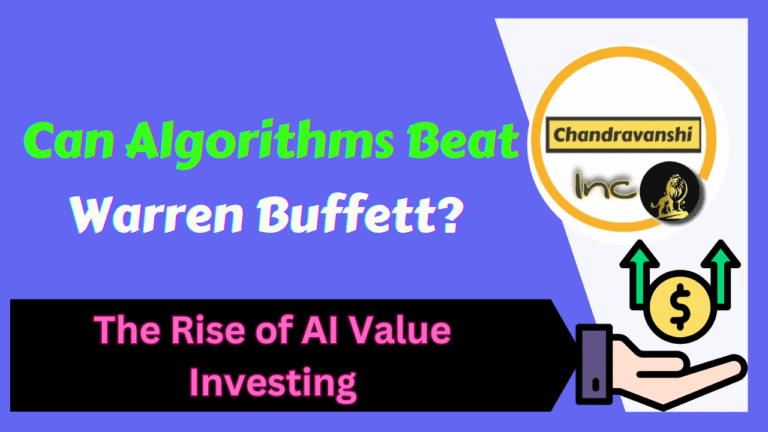Is AI the New Dot-Com Bubble?
🤖 Is AI the New Dot-Com Bubble?
A data-driven analysis of the $45 billion AI investment frenzy and what history teaches us about tech bubbles
Picture this: It's March 2000. Pets.com—a company selling dog food online—is worth $300 million despite never making a profit.
Fast forward to 2024. AI startups with flashy demos but no clear monetization path are commanding billion-dollar valuations.
Sound familiar? 🧐
As someone who lived through India's dot-com devastation—where Infosys crashed 83% and Wipro fell by the same margin—I see spine-chilling similarities emerging.
But here's the thing: Both can be true simultaneously. The internet WAS revolutionary. And the dot-com bubble was still a disaster for most investors.
📊 The Numbers Don't Lie: Bubble 2.0?
Here's what makes me nervous. These numbers mirror the dot-com era's investment velocity. But compressed into a much shorter timeframe.
The speed of this bubble formation is actually more dangerous than the original dot-com boom.
🔍 The Dot-Com Autopsy: $5.1 Trillion in Lessons
Let's break down what happened during history's most expensive lesson in market psychology.
The Global Carnage
NASDAQ Growth and Crash (1995-2002)
NASDAQ went from 755 to 5,048 (569% gain), then crashed 78%
- Market Cap Explosion: Tech stocks grew from $500 billion to $6.7 trillion
- IPO Madness: 457 companies went public in 1999, with 117 doubling on day one
- Valuation Insanity: Average P/E ratio hit 200 (vs. historical 15-20)
- The Crash: $5.1 trillion in market value evaporated
🇮🇳 India's Painful Lesson
I remember the euphoria. Everyone was talking about IT stocks. My neighbor quit his government job to day-trade Infosys.
Here's what happened to India's darlings:
| Company | Peak Price (₹) | Crash Low (₹) | Decline |
|---|---|---|---|
| Infosys | 8,100 | 1,400 | -83% |
| Wipro | 2,400 | 400 | -83% |
| Satyam Computer | 540 | 45 | -92% |
The BSE IT Index fell 70% between March 2000 and October 2002. Retirement dreams were shattered. People lost homes.
But here's the twist: The technology was revolutionary. Infosys and Wipro did become global giants. They just weren't worth those crazy 2000 prices.
🚨 Warning Signs: The Canaries Are Singing
When these red flags appeared in 1999, smart money headed for the exits. They're flashing again today.
1. The "Spray and Pray" Mentality
- Average AI startup valuation: $15M vs. $5M for non-AI startups
- 40% of AI startups have pivoted by simply adding "AI-powered" to their pitch
- Despite falling deal volumes, Q4 2024 VC investment hit $108.6B
2. Talent Market Gone Crazy
- AI/ML engineer salaries: $350K-$500K (up 60% from 2022)
- Tech giants offering $1M+ packages for top AI talent
- 300% increase in AI job postings since 2023
3. The NVIDIA Phenomenon
This gives me the chills. NVIDIA today looks exactly like Cisco in 1999.
| Metric | Cisco (1999-2000) | NVIDIA (2024) |
|---|---|---|
| Market Cap | $550B (~$800B today) | $2T+ |
| P/E Ratio | 150+ | 202 |
| Role | "Plumbing" of internet | "Plumbing" of AI |
| Post-Crash Decline | -86% | TBD 🤔 |
Cisco was selling the "picks and shovels" of the internet boom. NVIDIA is selling the picks and shovels of AI. History doesn't repeat, but it sure rhymes.
🤔 But Wait... This Time IS Different
Before you panic-sell everything, consider this crucial difference.
Established Giants vs. Speculative Startups
In 1999, 60% of high-valuation internet companies were startups with zero revenue. Today's AI boom is driven by profitable tech giants.
Infrastructure Reality Check
The dot-com era was built on shaky foundations:
- 56k dial-up internet for most users
- Primitive e-commerce infrastructure
- High costs for basic web hosting
Today's AI boom has solid infrastructure:
- Ubiquitous high-speed internet
- Mature $500B cloud infrastructure
- Advanced semiconductor capabilities
- Established digital payment ecosystems
📈 My Investment Framework: Learning from $5 Trillion in Losses
Nishant's Note:
As someone planning to retire in 5-7 years, I've learned that fundamentals are the only reliable compass in any market storm—whether it's dot-com, housing, crypto, or AI bubbles.
The Non-Negotiable Metrics
After studying every major bubble, here's what separates survivors from casualties:
- ROCE > 15%: Shows management can efficiently deploy capital
- ROIC > 15%: Indicates genuine competitive advantages
- Consistent ROE: Must be sustained over 3-5 years
- Strong Balance Sheet: 18+ months cash reserves
Risk-Based AI Investment Strategy
| Risk Level | Examples | Key Metrics | Portfolio Weight |
|---|---|---|---|
| Lower Risk | Microsoft, Alphabet, Amazon | 15% AI revenue, strong enterprise base | Up to 15% |
| Medium Risk | NVIDIA, established AI companies | 30-50% AI revenue dependence | Up to 10% |
| High Risk | Pure-play AI startups | >100x revenue multiples | Max 5% |
My Personal Rules
- Position Sizing: No single AI stock > 5% of portfolio
- Total Exposure: AI shouldn't exceed 25% of equity allocation
- Valuation Discipline: P/S ratios above 50x historically see 70%+ downside
- Survivor Test: Will this company exist in 15 years?
⏰ The Reality Check: Technology Adoption Takes Time
Here's what markets consistently get wrong about revolutionary technologies:
Internet Adoption: Expectations vs. Reality
E-commerce took 25 years to reach what markets expected in 5 years
The pattern is always the same: Revolutionary technology, overhyped timeline, market crash, slow adoption, eventual transformation.
Historical Technology Boom-Bust Cycles
- Telegraph (1840s): 95% of companies failed, technology revolutionized communication
- Railroad Boom (1870s): Massive overbuilding, infrastructure enabled later growth
- Automobile (1900-1930): 2,000+ companies founded, fewer than 10 survived
- Internet (1995-2010): 95% of dot-coms failed, survivors created $10T+ value
🎯 The Verdict: Revolution AND Bubble
Here's the uncomfortable truth that most investors refuse to accept:
Just like the internet was revolutionary AND the dot-com bubble was devastating.
What the Data Tells Us
- Technology Validity: ✅ AI capabilities are genuinely revolutionary
- Valuation Excess: ⚠️ Current pricing assumes perfect execution
- Market Structure: ✅ Established giants provide stability
- Investment Concentration: ❌ Too much capital chasing marginal players
The MIT 2025 study found that 95% of enterprise AI pilot projects fail to deliver meaningful ROI. That's not because AI doesn't work—it's because transformation takes time.
🛡️ My Bubble-Proof Investment Philosophy
After living through multiple market cycles, here's what I've learned works:
The Benjamin Graham Approach
"In the short run, the market is a voting machine, but in the long run, it is a weighing machine."
The AI revolution will ultimately be weighed by its ability to generate sustainable profits, not demo videos.
My Sector Focus (Based on 20+ Years of Data)
I avoid cyclical companies because they destroy wealth during downturns. Instead, I focus on sectors with proven resilience:
Consistent demand across cycles
Growing healthcare needs
Recurring revenue models
Long-term wealth compounders
The Margin of Safety Principle
Never compromise on valuation, regardless of growth stories. Whether it's AI, biotech, or any "revolutionary" sector, paying the right price determines long-term returns.
My rule: I'd rather buy a good company at a fair price than a great story at any price.
📋 Actionable Investment Strategy
If You're Bullish on AI (Like Me)
- Focus on established tech giants with AI as revenue enhancement
- Look for companies with ROCE > 15% and strong balance sheets
- Limit AI exposure to 25% of equity portfolio
- Dollar-cost average into positions over 12-24 months
If You're Bearish on Current Valuations
- Wait for the inevitable correction (history says 30-50% decline likely)
- Build watchlists of quality AI-adjacent companies
- Keep 20-30% cash for opportunities
- Focus on defensive sectors until valuations normalize
For Conservative Investors
- Stick to dividend-paying, established companies
- Consider AI ETFs for diversified exposure
- Maintain traditional value investing principles
- Avoid pure-play AI startups entirely
🎯 Key Takeaways
- History Rhymes: Current AI investment patterns mirror dot-com bubble warning signs
- Technology is Real: Unlike 1999, AI has immediate practical applications and revenue generation
- Timing Matters: Revolutionary doesn't mean profitable at current prices
- Diversification Wins: Don't bet everything on one technology trend
- Fundamentals Rule: ROCE, ROIC, and ROE never go out of style
- Patience Pays: The biggest gains come after corrections, not during bubbles
🔮 My Prediction
Based on historical patterns and current data, here's what I expect:
AI Market Cycle Prediction (2024-2030)
- 2024-2025: Continued bubble expansion, increasing warnings
- 2025-2026: 30-50% correction in AI valuations
- 2027: Market stabilization, realistic pricing
- 2028-2030: Genuine AI productivity gains drive sustainable growth
The companies that survive this cycle will become the next Amazon and Google. But most won't survive.
🏁 Final Thoughts
The AI revolution is real. The bubble is also real. Smart investors prepare for both.
As someone who's planning retirement in the next 5-7 years, I'm not gambling with AI pure-plays. But I'm not ignoring the opportunity either.
My approach? Steady exposure to established tech giants, strict valuation discipline, and patience for the inevitable correction that will create real buying opportunities.
History doesn't repeat, but it sure rhymes. The question isn't whether AI will transform the world—it's whether you'll preserve your wealth through the transformation.
📚 Sources & References
Key Data Sources:
- NASDAQ Historical Data - Market performance metrics
- BSE India - Indian market historical data
- PitchBook - VC funding and startup valuation data
- Goldman Sachs Research - AI market analysis
- MIT Technology Review - AI adoption studies
- McKinsey & Company - Enterprise AI research
- Financial Times - Market analysis and expert quotes
- TechCrunch - Startup funding data
Author: Nishant Chandravanshi - Specializing in Power BI, Azure Data Factory, SQL, Python, and market analysis with 15+ years of technology and investment experience.





